They say that home is where the heart is, but we believe it’s also where style meets durability.
If you’ve ever wondered how to transform your house from “nice” to “OMG, that’s stunning!”, you’re in for a treat.
Welcome to the ultimate guide on selecting the best types of siding for your house, where we’re diving deep into the world of siding materials, from the classic charm of wood to the futuristic appeal of metal panels.
Fiber Cement Siding
Known for its durability and low maintenance, fiber cement siding (like the one from James Hardie) offers the look of wood without the drawbacks.
It’s resistant to rot, insects, and fire, making it a long-lasting choice for your home’s exterior.
With its versatility and ability to mimic various textures, fiber cement siding provides an attractive option that stands the test of time.
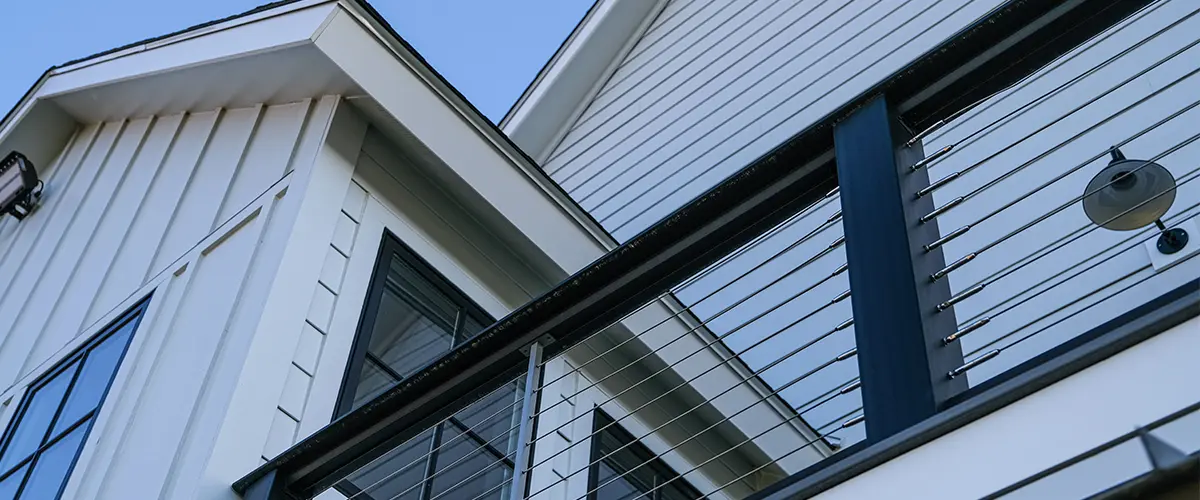
Pros and Cons of Fiber Cement Siding
| Pros | Cons | |
|---|---|---|
| Durability | Resistant to rot, insects, and fire | Heavier material may require strong installation |
| Low Maintenance | Minimal upkeep, doesn't require painting often | May need occasional repainting over time |
| Weather Resistance | Withstands harsh weather conditions | Extreme temperature changes can cause cracking |
| Appearance | Can mimic wood, stone, or brick textures | Limited color options compared to other materials |
| Longevity | Typically has a longer lifespan than wood siding | Initial cost can be higher than vinyl |
| Fire Resistance | Non-combustible, adds fire protection to your home | Installation may require specialized tools |
Wood Siding
For a timeless and natural aesthetic, wood siding is an excellent choice.
Whether you prefer the classic appeal of wood shingles, the rustic charm of cedar lap siding, or the elegance of wood planks, natural wood siding offers a warm and inviting look.
However, it requires regular maintenance to prevent weathering and decay.
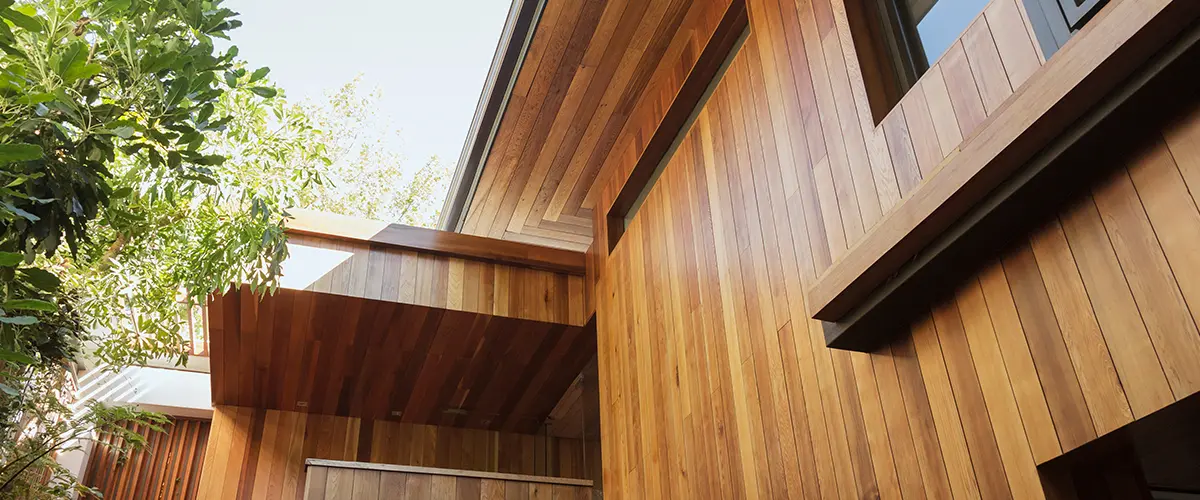
Pros and Cons of Wood Siding
| Pros | Cons | |
|---|---|---|
| Natural Aesthetic | Warm and timeless appearance | Requires regular maintenance |
| Customizable | Can be painted or stained in various colors | Susceptible to weathering, rot, and insects |
| Environmentally Friendly | Renewable resource, biodegradable | May warp, crack, or split over time |
| Texture Variety | Available in various styles such as shingles, lap, and clapboard | Regular sealing or painting required |
| Insulation | Natural insulator, adds some energy efficiency | Higher maintenance costs compared to some alternatives |
| Historical Charm | Well-suited for historic or traditional homes | May require replacement sooner than other materials |
Vinyl Siding
Vinyl siding is a popular option due to its affordability, low maintenance, and diverse design options.
It’s available in horizontal and vertical panels, and it can even mimic the appearance of wood or other materials.
Vinyl siding is a budget-friendly choice that provides decent durability and insulation benefits.

Pros and Cons of Vinyl Siding
| Pros | Cons | |
|---|---|---|
| Affordability | Cost-effective option for budget-conscious homeowners | May not have the same visual appeal as natural materials |
| Low Maintenance | Requires minimal upkeep, no painting needed | Not as durable as some other materials |
| Color Variety | Wide range of colors and styles available | Susceptible to cracking and fading over time |
| Moisture Resistance | Resistant to moisture, won't rot or warp | May not provide the same level of insulation as other options |
| Easy Installation | Quick and straightforward installation process | Can be damaged by extreme weather conditions |
| Energy Efficiency | Some insulated vinyl options offer improved energy efficiency | Not as environmentally friendly as natural materials |
| Warranty Options | Many manufacturers offer long warranties | May not have the same visual authenticity as other materials |
Metal Siding
If you’re aiming for a modern and sleek appearance, metal siding might be the right fit.
It comes in various materials like aluminum and steel, offering durability and resistance to the elements.
Metal siding can be a bit pricier than other options, but its contemporary look and longevity make it a great investment.
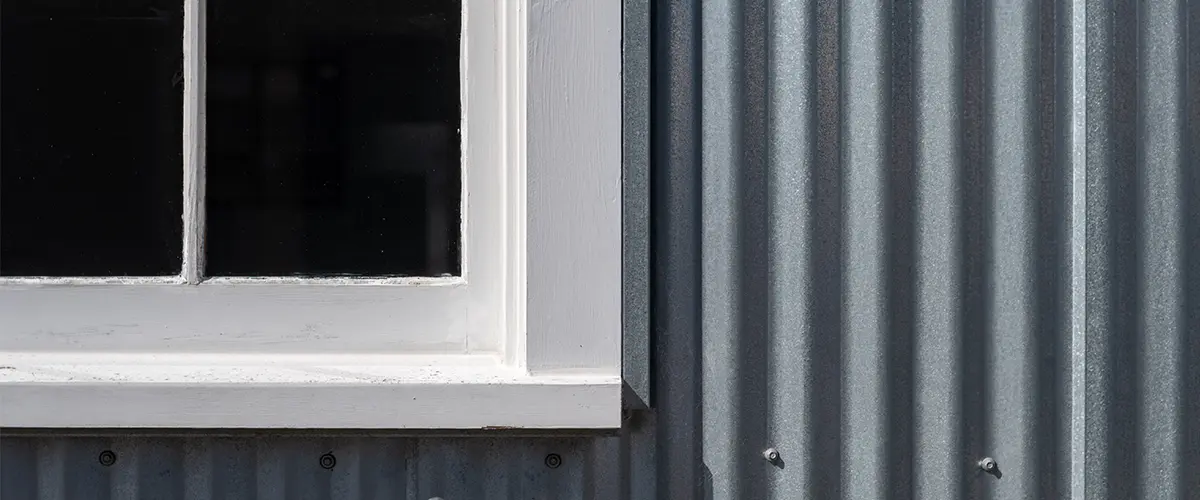
Pros and Cons of Metal Siding
| Pros | Cons | |
|---|---|---|
| Durability | Highly resistant to weather, pests, and fire | Prone to dents and scratches from impacts |
| Modern Appearance | Sleek and contemporary aesthetic | May not suit all architectural styles |
| Low Maintenance | Requires minimal upkeep, doesn't fade or rot | Can be more expensive than some other materials |
| Longevity | Can last for decades with proper care | Not as easy to install as some other materials |
| Energy Efficiency | Reflects sunlight, reduces cooling costs | May require additional insulation for optimal energy efficiency |
| Customization | Available in various colors and finishes | May require professional installation |
| Environmentally Friendly | Recyclable material, reduces environmental impact | Some types of metal siding can be noisy during rain or hail |
Brick Siding
Solid brick siding exudes timeless elegance and durability. It’s known for its low maintenance and can add a touch of luxury to your home’s exterior.
Brick veneer siding offers a lighter and more cost-effective alternative, retaining the look of real brick while being easier to install.

Pros and Cons of Brick Siding
| Pros | Cons | |
|---|---|---|
| Timeless Elegance | Adds a classic and luxurious look to your home | Can be more expensive than other siding options |
| Durability | Extremely durable, stands up to weather and pests | Requires specialized installation skills |
| Low Maintenance | Virtually maintenance-free, doesn't require painting | Limited design options compared to other materials |
| Fire Resistance | Non-combustible, adds fire protection to your home | Can be time-consuming and expensive to install |
| Insulation | Excellent thermal and sound insulation | May require occasional tuck-pointing over time |
| Longevity | Can last for generations without deterioration | Heavy material, may require additional structural support |
| Historical Value | Well-suited for preserving historical aesthetics | Time and labor-intensive installation process |
Stone Veneer Siding
Capturing the essence of natural stone, stone veneer siding is a lightweight and cost-effective option.
It provides the appearance of genuine stone without the high expenses associated with full-stone siding. Stone veneer siding adds texture and character to your home’s facade.

Pros and Cons of Stone Veneer Siding
| Pros | Cons | |
|---|---|---|
| Natural Look | Offers the appearance of genuine stone | May not have the same level of durability as real stone |
| Lightweight | Easier to install than full stone siding | May fade or discolor over time |
| Cost-Effective | Provides the look of stone at a lower cost | May not offer the same level of insulation as other materials |
| Weather Resistance | Resistant to weather, pests, and rot | Limited design and texture options compared to full stone |
| Installation Flexibility | Suitable for both interior and exterior applications | Requires proper installation techniques for longevity |
| Texture Variety | Available in various textures and colors | May not be as fire-resistant as other materials |
| DIY-Friendly | Some stone veneer can be installed by homeowners | May not offer the same level of long-term value as real stone |
Insulated Vinyl Siding
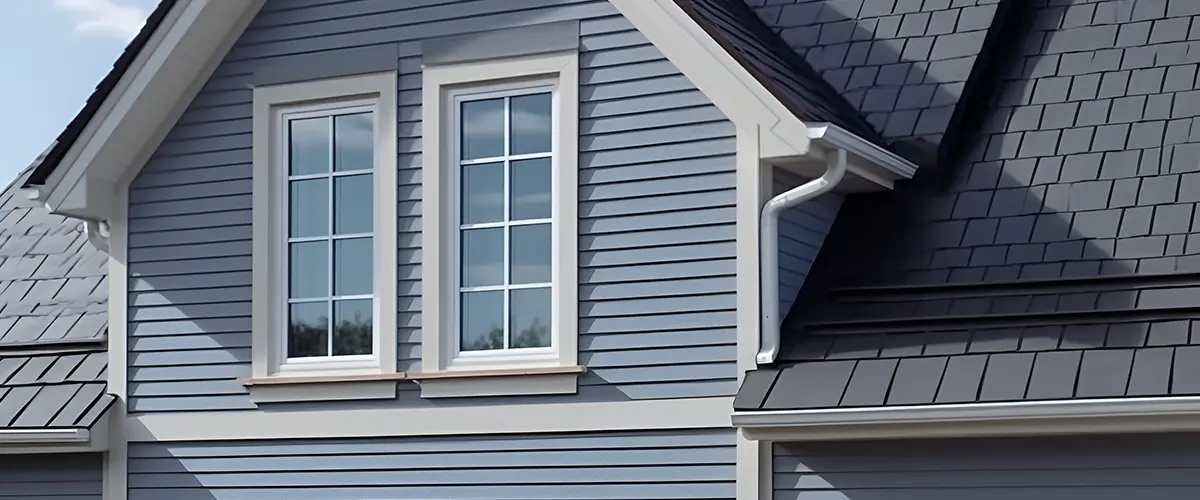
Pros and Cons of Insulated Vinyl Siding
| Pros | Cons | |
|---|---|---|
| Energy Efficiency | Enhanced insulation properties reduce energy costs | May have a higher upfront cost than traditional vinyl |
| Low Maintenance | Minimal upkeep, doesn't require painting | Insulated options may be thicker and require special installation |
| Weather Resistance | Resistant to moisture, pests, and extreme weather | Not as authentic-looking as some natural materials |
| Sound Insulation | Offers improved noise reduction for a quieter home | May not suit certain architectural styles |
| Customization | Comes in various colors, styles, and finishes | Some insulated options may be less visually appealing |
| Longevity | Regular vinyl siding benefits with added insulation | Thicker profile can affect window and door trim |
| Installation | Generally easier to install than other insulated materials | May require specialized tools or techniques for installation |
Engineered Wood Siding

Pros and Cons of Engineered Wood Siding
| Pros | Cons | |
|---|---|---|
| Aesthetic Appeal | Mimics the look of real wood with various textures | May not have the same authenticity as natural wood |
| Durability | Resistant to rot, insects, and weathering | Durability may vary based on quality of material |
| Low Maintenance | Requires less upkeep than real wood | Can be more expensive than other siding options |
| Moisture Resistance | Less prone to warping or cracking due to moisture | May not offer the same level of insulation as some materials |
| Customization | Available in a range of colors and styles | Requires proper installation for optimal longevity |
| Environmentally Friendly | Made from sustainable materials | Quality can vary between different manufacturers |
| Installation | Can be easier to install than natural wood | May need occasional repainting or refinishing |
Composite Siding

Pros and Cons of Composite Siding
| Pros | Cons | |
|---|---|---|
| Durability | Resistant to rot, insects, and weather damage | Quality may vary depending on the brand |
| Low Maintenance | Requires minimal upkeep, no painting needed | Can be more expensive than traditional materials |
| Customization | Available in various colors and styles | May not have the same natural look as wood or stone |
| Moisture Resistance | Doesn't warp, crack, or peel due to moisture | May require specialized installation techniques |
| Environmentally Friendly | Some composite materials are made from recycled content | May have limited texture options compared to natural materials |
| Longevity | Can last for many years with proper care | May not offer the same visual appeal as other options |
| Installation | Typically easier and quicker to install than natural materials | May not have the same authenticity as wood or stone |
Choosing the Right Siding for Your Home
Selecting the best siding for your house involves considering a variety of factors to ensure your choice aligns with your needs, preferences, and the unique characteristics of your home.
Here’s a step-by-step guide to help you determine which type of siding is the perfect fit.
1. Evaluate Your Home's Style and Architecture
Take a close look at your home’s architectural style. Different types of siding complement specific styles better than others.
For instance, wood siding adds warmth to traditional and rustic homes, while sleek metal siding suits modern and contemporary designs.
Consider the existing elements of your home’s exterior and aim for a siding option that enhances its overall aesthetic.
2. Assess Durability and Longevity
Think about how long you plan to stay in your home and the level of maintenance you’re comfortable with.
Some siding materials, like vinyl and fiber cement, are known for their durability and low maintenance requirements.
Others, such as wood, require regular upkeep to prevent deterioration. Balance your desire for a long-lasting option with your willingness to invest time and effort in maintenance.
3. Consider Climate and Weather Conditions
Your local climate plays a significant role in choosing the right siding.
Some materials, like fiber cement and vinyl, are resistant to moisture, making them ideal for areas with high humidity or frequent rain.
If you live in a region with extreme temperature fluctuations, opt for siding materials that can handle those conditions without warping or fading.
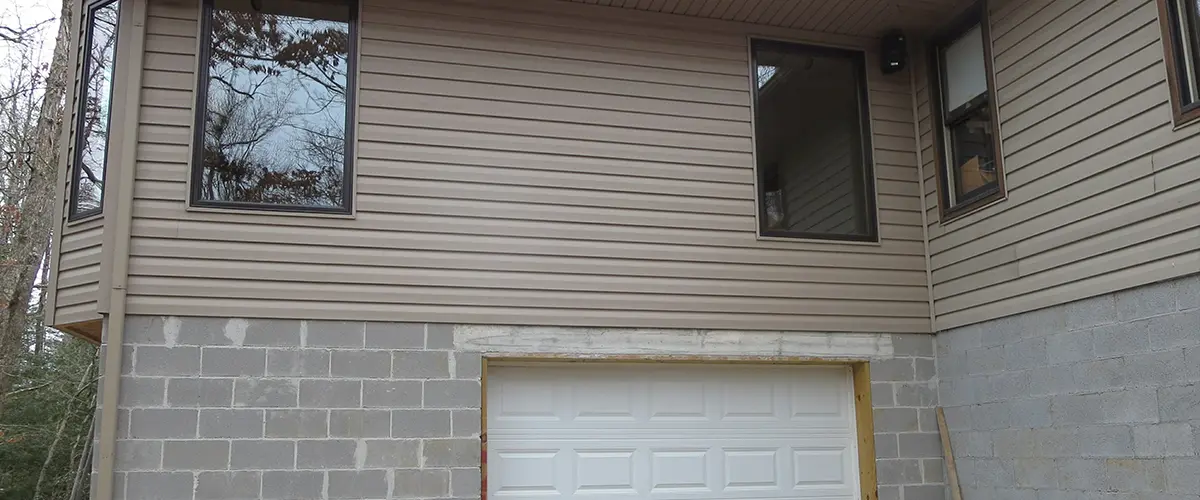
4. Evaluate Cost and Budget
Siding costs can vary widely, not only in terms of materials but also installation.
While vinyl siding is often more budget-friendly upfront, options like wood and stone veneer may have a higher initial cost.
Consider the long-term investment – some pricier materials, like brick or fiber cement, might offer better durability and fewer replacement costs over time.
5. Explore Maintenance Requirements
If you prefer a low-maintenance option, look into siding materials that won’t demand frequent upkeep.
Vinyl and metal siding generally require minimal care, while wood siding demands regular painting or staining to prevent wear and rot.
Factor in the time and expenses associated with maintenance when making your decision.
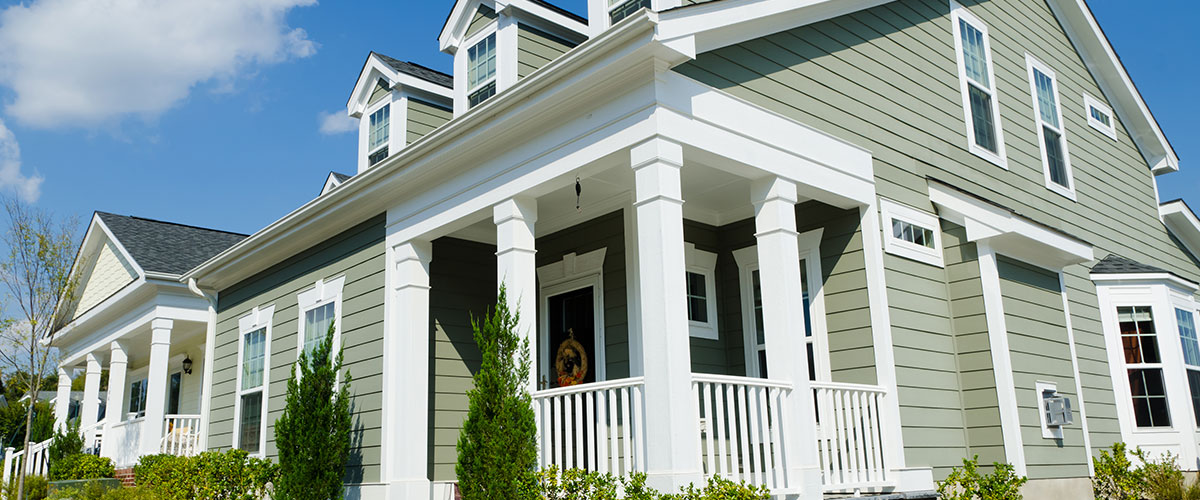
6. Prioritize Energy Efficiency
Siding can contribute to your home’s energy efficiency.
Insulated vinyl siding, for example, provides extra insulation that can help regulate indoor temperatures and potentially lower utility bills.
Evaluate the insulation properties of different siding options and their impact on your home’s overall energy efficiency.
7. Seek Professional Guidance
Engaging with siding experts or contractors can provide valuable insights tailored to your home’s specific needs.
They can evaluate your home’s structure, suggest appropriate materials, and provide accurate cost estimates.
Professional advice can help you make an informed decision based on your budget and goals.

8. Examine Local Regulations and Restrictions
Before finalizing your choice, check if your local homeowners’ association or building codes have any restrictions on siding materials.
Certain neighborhoods may have guidelines that dictate which siding options are permissible.
Ensure your chosen siding aligns with these regulations to avoid any future issues.
Conclusion
If you feel overwhelmed by all of these details given here in this blog post or need more information on what types of siding best fits your needs and budget, professionally speaking, then don’t hesitate to get in touch with us!
We will be glad to help you with whatever you need when it comes to ensuring that your home gets the perfect siding that looks fabulous years down the line so its property value will never drop!
Here at City & Country Contracting, we’ve been installing home sidings from our very beginning. We’re experts in our trade and we love bringing homes back to their youth.
If you’re interested in a complete siding installation or any home improvement you have in mind, give us a call at (604) 329-8996 or request a free quote!
